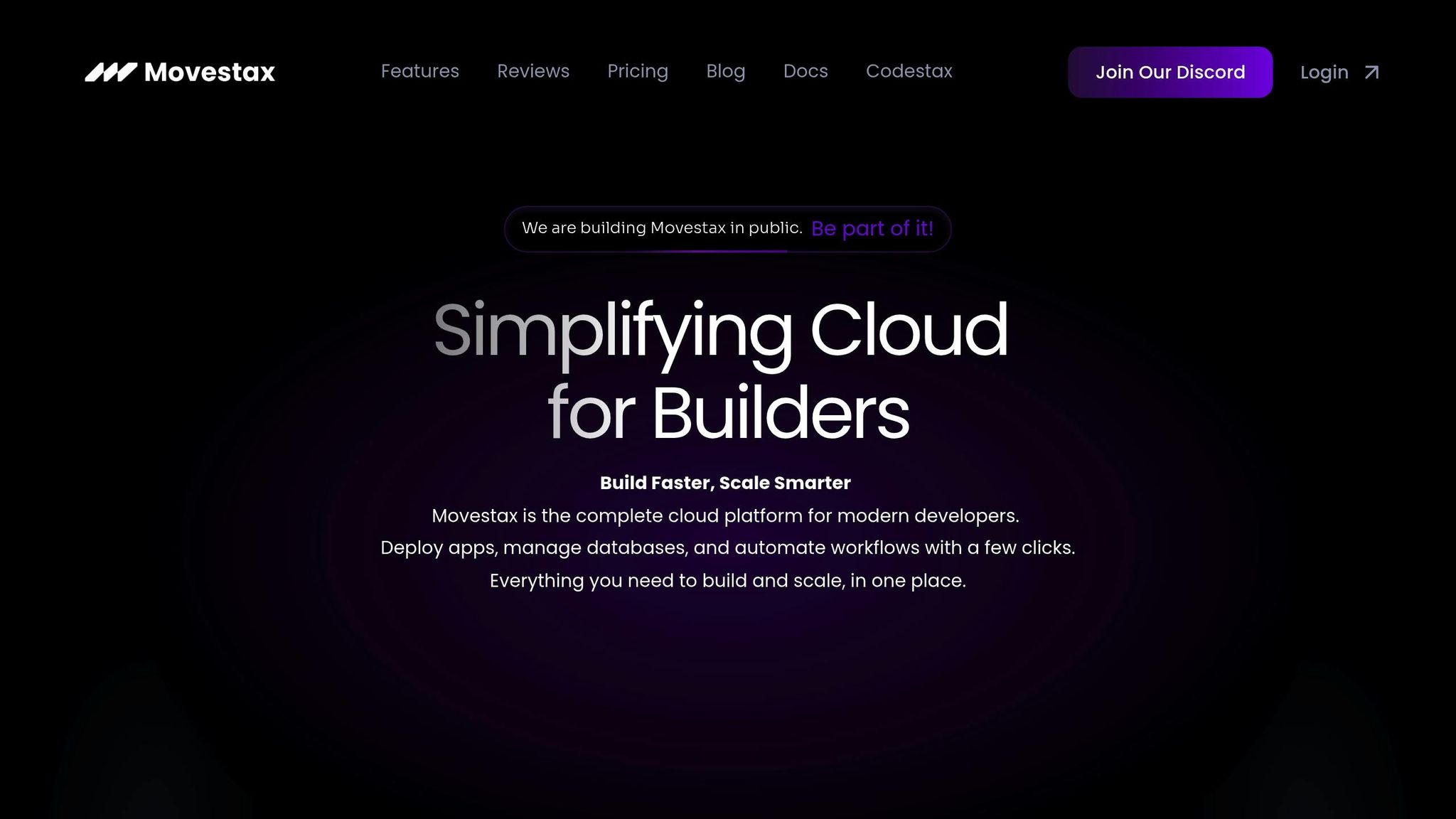Want to secure your serverless applications? Here's how:
Limit Permissions: Only grant functions the access they need. Use resource-level access, time-limited tokens, and role-based boundaries.
Protect Secrets: Encrypt sensitive data, monitor access, and regularly rotate keys.
Control Function Settings: Set execution timeouts, memory limits, and network restrictions to reduce risks.
Secure APIs: Use HTTPS, OAuth 2.0, and validate incoming data to protect your APIs.
Safeguard Data: Encrypt data (AES-256, TLS 1.3), isolate storage layers, and monitor access patterns.
Monitor Continuously: Track function activity, scan for vulnerabilities, and set up alerts for anomalies.
Tools like Movestax simplify serverless security with built-in protections for databases, authentication, and workflows. Focus on building features while automated systems handle security.
Runtime Protection - Serverless - Hack: Runtime Protection of ...
Key Runtime Security Practices
When working with serverless environments, keeping functions secure during runtime is crucial. Below are some essential practices to help maintain a strong security posture.
Minimum Permission Settings
Always stick to the principle of least privilege. This means functions should only have access to the resources they absolutely need. For example, if a function only reads from one database table, ensure it has read-only access specifically for that table. Avoid granting permissions like full database or admin access.
Key controls to implement include:
Resource-level access: Limit permissions to specific resources.
Time-limited tokens: Use tokens that expire to reduce risk.
Role-based boundaries: Ensure roles have clear, restricted scopes.
Service-to-service authentication: Use secure methods for service communication.
Secret and Variable Protection
Movestax offers built-in tools for managing secrets securely. Protecting sensitive information like API keys and environment variables is non-negotiable.
Best practices include:
Encryption at rest: Always encrypt secrets and sensitive variables when stored.
Access logging: Monitor and audit all access attempts to sensitive data.
Rotation policies: Regularly update keys and credentials to minimize exposure risks.
Function Control Settings
Set secure operational boundaries to reduce vulnerabilities. Key settings to configure:
Execution timeouts: Limit how long a function can run to prevent unnecessary resource use.
Memory limits: Assign just enough memory to prevent resource exhaustion.
Concurrent execution limits: Cap the number of simultaneous function instances to maintain stability.
Network access restrictions: Apply strict rules for both incoming and outgoing connections.
API and Data Protection
Securing APIs and safeguarding data go hand in hand. This section breaks down key controls to ensure both are protected effectively.
API Security Setup
An API gateway, when properly configured, acts as a barrier against common threats. Here’s what to focus on:
Limit requests and restrict IP ranges to reduce the risk of attacks.
Use OAuth 2.0 or JWT-based authentication to verify users.
Enforce HTTPS on all endpoints to secure communications.
Validate incoming payloads to prevent malicious data from entering your system.
Movestax simplifies this process with built-in authentication tools and an API Marketplace designed to streamline security. Pair these measures with strong data protection practices for maximum coverage.
Data Security Methods
Data security requires attention to both storage and transmission. Here’s how to keep it safe:
Data Isolation
Store sensitive data separately from application logic.
Use dedicated storage layers tailored to varying security needs.
Enforce strict access controls between different layers of your system.
Encryption Standards
Secure stored data using AES-256 encryption.
Protect data in transit with TLS 1.3.
Apply end-to-end encryption for the most sensitive operations.
Event Data Security
Sanitize event data and rely on parameterized queries to prevent injection attacks.
Movestax includes built-in database security, ensuring data integrity across your application.
Monitoring and Auditing
Log every instance of data access and encryption activity.
Watch for unusual data access patterns that could signal a breach.
Configure alerts to flag any security anomalies in real-time.
Deployment Security
Protecting your applications during deployment requires strict controls and ongoing monitoring. This approach ensures your functions stay secure and operate as intended. Deployment security completes the protection process by locking down function versions and keeping a close eye on their execution.
Keeping Functions Unchangeable
Once deployed, functions should remain unaltered until a new version is intentionally released.
Version Control: Every deployment creates a fixed snapshot of your function.
Movestax strengthens this process with built-in immutability features. It automatically generates versioned snapshots, ensuring no unauthorized modifications can occur.
With immutability in place, continuous monitoring steps in to catch any irregularities as they happen.
Monitoring for Security
Ongoing security monitoring is critical for safeguarding serverless environments. A robust monitoring system keeps tabs on function activity and identifies potential threats by:
Tracking function execution in real time
Running regular vulnerability scans and access audits
Observing resource usage and access patterns
Automated scans and intelligent alerts can help you identify issues like timeouts or unusual resource spikes quickly.
Movestax streamlines this with integrated tools that monitor function execution and provide timely alerts, offering consistent protection for your serverless setup.
Movestax Security Features

Movestax offers tools designed to simplify runtime protection for serverless applications.
Movestax Security Tools
The platform focuses on managed serverless databases and integrated authentication to address common security challenges. Movestax supports PostgreSQL, MongoDB, and Redis databases, all configured with default security measures to avoid setup errors.
Here’s what Movestax provides:
Automated Database Protection: Managed database instances come pre-configured to minimize setup risks.
Built-in Authentication: A ready-to-use authentication system ensures effective access control.
Workflow Security: Integration with n8n enables secure automation for serverless workflows.
Movestax also includes database activity monitoring to help maintain secure operations.
Security Setup with Movestax
Movestax makes security configuration straightforward via its unified dashboard:
Database Security Configuration
Choose your database type (PostgreSQL, MongoDB, or Redis).
Use the visual interface to set access permissions.
Authentication Setup
Enable built-in authentication and define user roles.
Workflow Protection
Activate secure n8n workflow automation.
Configure monitoring alerts to track workflow execution.
Movestax focuses on automating security processes while maintaining high protection standards. Its system tracks resource usage and flags unusual activity, letting developers concentrate on building features while the platform manages security infrastructure.
Summary
Movestax simplifies runtime security with built-in protections and a single, easy-to-use dashboard. It blends established security practices with integrated tools to ensure seamless protection.
Here’s how Movestax strengthens security:
Database Security: Fully managed database instances using PostgreSQL, MongoDB, and Redis reduce setup risks and ensure consistent protection.
Authentication Controls: Strong authentication systems enforce strict access control for serverless applications.
Workflow Protection: Automated processes are safeguarded with integrated n8n workflows, complete with monitoring for added security.
By centralizing security management, Movestax automates database protection, enforces strict access controls, and provides continuous monitoring. This lets development teams focus on creating features without compromising security.
To get the most out of runtime security, follow these steps:
Implement automated database protection.
Set up authentication systems based on current standards.
Enable monitoring alerts to catch threats early.
Regularly review security logs and analyze access patterns.
FAQs
How can I limit serverless function permissions to only what’s necessary without affecting functionality?
To ensure your serverless functions have the minimum necessary permissions while maintaining functionality, follow the principle of least privilege. Assign only the permissions required for the specific tasks the function performs. This reduces the risk of unauthorized access or misuse.
Use tools like IAM roles or policies to define granular permissions for each function. Regularly audit and test these permissions to confirm they meet your application's needs without overprovisioning. Additionally, consider implementing runtime monitoring to detect and address any unusual behavior or access attempts in real time.
How can I securely manage and rotate secrets in a serverless environment?
Managing and rotating secrets in a serverless environment is essential for maintaining robust security. To do this effectively, consider using a dedicated secrets management tool or a cloud provider's native solution to store sensitive data like API keys, database credentials, and encryption keys securely. These tools often provide features like encryption, access control, and automated rotation.
For best practices, ensure that secrets are never hardcoded in your application code or stored in version control. Use environment variables to inject secrets into your serverless functions at runtime. Additionally, implement role-based access control (RBAC) to restrict access to secrets only to services or functions that need them. Regularly rotate your secrets and audit access logs to detect any unauthorized access or anomalies. By following these steps, you can strengthen the security of your serverless applications.
How can Movestax simplify and automate security processes for serverless applications?
Movestax streamlines security for serverless applications by providing a developer-friendly platform that integrates key security practices into your workflows. With its intuitive interface, you can manage infrastructure, automate workflows, and deploy applications with built-in safeguards.
Additionally, Movestax offers fully managed services like databases and workflows, reducing the need for manual configurations and minimizing potential vulnerabilities. These features help ensure your serverless applications are secure, scalable, and easy to maintain.







